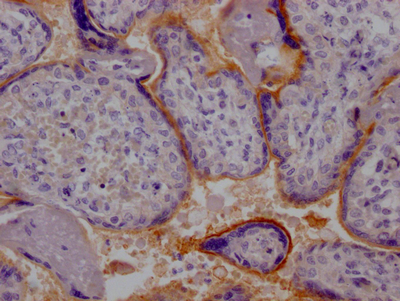The recombinant TPBG antibody was prepared by obtaining the antibody genes, cloning the genes into a plasma vector to construct vector clone, transfecting the vector clone into a mammalian cell line for transient expression, and purifying the antibody by affinity-chromatography. This recombinant TPBG antibody has been verified to detect the TPBG protein from Human in the ELISA, IHC.
TPBG is an oncofetal cell surface glycoprotein that plays a role in cell migration and EMT. TPBG is limitedly expressed in normal tissue but overexpressed in diverse solid tumors. Upregulation of TPBG has been found in various types of malignancies including bladder, breast, and pancreas cancers, and is associated with a dismal clinical outcome. TPBG regulates cytoskeletal organization and cell motility in mammalian embryonic cell lines via modulating Wnt signaling and interacts with scaffolding protein to regulate cell-surface expression of receptor and transporter.





